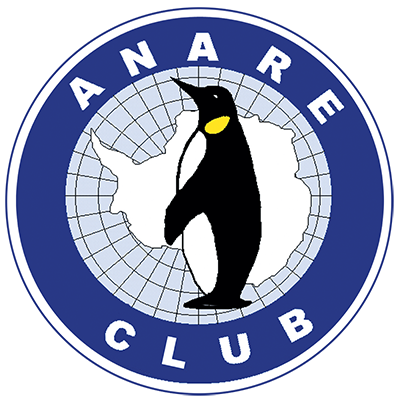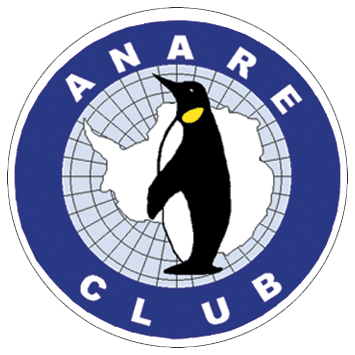Australian Antarctic Division Tribute to Dr Phil Law
He considered his greatest achievement, as leader of the Australian National Antarctic Research Expedition (ANARE) parties, to be the first landings at Larsemann Hills, where ice-free peaks rise to 500ft. He began the attempt in February 1958 aboard the especially-strengthened Greenland charter ship Thala Dan, only to find that her master was a man of “remarkable timidity”, reluctant to move inshore in uncharted, ice-infested waters.
Taking the helm of the ship’s launch, Law succeeded in steering through a mass of drifting slabs of sea ice in fast-freezing water. He then made an even more difficult landing, before shrewdly following open water back to the ship, where he went to bed for the first time in two days. “We had ‘cracked’ the Larsemann Hills,” he later recalled, “a feat in those days (without helicopters) of no little difficulty”.
The son of a teacher, Phillip Garth Law was born on April 21 1912 and educated at Hamilton High School, Victoria, where he first taught before going on briefly to Geelong Grammar and then enrolling at Ballarat Teachers’ College. Though always interested in “adventure, camping, mountain climbing and those things” his initial ambition was to become a surgeon. He financed his studies at Melbourne University by teaching but still found time to box, swim and play football before gaining his MA in Physics in 1941.
After volunteering as an RAAF pilot Law was frustrated to be told he was required back at the university for war work. Keen to establish his valour he set up an organisation called University National Service before being dispatched to New Guinea to carry out a one-man study of the way optical instruments deteriorated in the tropics because of fungal growth.
He was lecturing at Melbourne University when, in late 1947, the Australian government decided to establish meteorological and scientific research stations on Heard Island and Macquarie Island in the sub-Antarctic and reconnoitre a site for a permanent station on the Antarctic mainland.
“I thought it would be fascinating to get into the Antarctic work,” Law said later. “It would be wonderful to be able to marry my scientific interests with my interests in sport and physical activities and my sense of adventure.” A month later he had fulfilled his dream.
“The sun was low on the horizon so all the light was apricot golden coloured with tints of crimson and apricot across the icebergs, on the pack ice, on this perfectly mirror-smooth water. We were seeing blue whales in quite large numbers. And you stand on deck and soak up this glorious beauty.”
On February 29 1948 Campbell and Law became (along with an Able Seaman Wallace) the first men since 1839 to land on the Balleny Islands – considered among the most inhospitable in the world.
In late 1953 Law chartered the Danish vessel Kista Dan and sailed from Melbourne to find an ideal site for a station on a rock outcrop on Mac Robertson Land. “I was obsessed with this idea of getting a base in Antarctica,” he noted. So determined, in fact, that he was prepared to blast his way through pack ice despite the resistance of captains who, perhaps understandably, “never wanted me to explode dynamite under their ships”. Feeling “better prepared almost than anyone in history, except Amundsen, to lead such an expedition”, Law set off, quickly hitting fast flowing ice, which was itself being pummelled by hurricane force winds. “It was quite frightening because we thought the ship would be crushed,” Law recalled with characteristic understatement. “I could hear the grinding of the ice against the side and … great blocks of ice were piling up and falling over onto the deck of the ship”.
After spending two days using pick axes and hammers to dig their craft out, Law and his crew succeeded, in February 1954, in establishing Australia’s first permanent Antarctic station, named after Sir Douglas Mawson (who had led the Australasian Antarctic expedition from 1911 to 1913 which was, Law thought, “arguably the greatest of the heroic era expeditions”, Scott’s included).
“We were all extremely patriotic,” Law said. “Tremendously proud to be able to raise the Australian flag and say: ‘In the name of Queen Elizabeth and the Commonwealth of Australia, we raise this flag as an example of Australian ownership to this Australian Antarctic Territory’.”
Realising that if Australia was to play its full part in International Geophysical Year (1957-58), a second permanent station on the continent was needed, Law built Davis station on the extensive ice-free area of Princess Elizabeth Land. A newer and larger Danish ship, Thala Dan, was then brought into ANARE service for coastal surveys of Oates Land and Enderby Land on the eastern and western extremities of the territory.
In 1959 Law’s negotiations led to the American IGY Wilkes station in Wilkes Land being transferred to Australia. Two years later, it became the third of Australia’s three permanent stations on the continent, establishing her as a leading country in Antarctic exploration and scientific research and one of the 12 original parties to the Antarctic treaty, which came into effect in 1961.
By the time Law left his post in 1966, he had made 28 landings at previously unvisited sites and jocularly claimed that he had explored 10 times as much territory as Scott, Shackleton, Mawson and others put together.
Law was a co-author of ANARE: Australia’s Antarctic Outposts (1957) and the sole author of Antarctic Odyssey (1983) about his years as leader of the ANARE. He was an extremely able photographer, mountaineer, skier and skin-diver; he liked to take a piano accordion with him on his journeys, though he regretted not having enough time to practice his clarinet. He married, in 1941, Nel Allan, a professional artist who, in 1961, accompanied him to the Antarctic where she painted landscapes. She died in 1990.
Phillip Law was appointed CBE in 1961, AO in 1975 and AC in 1995. He received the Founder’s Gold Medal of the Royal Geographical Society in 1960 and the Polar Medal in 1969.
In his later years he returned twice to the Antarctic, once in a Russian cruise ship and once in a commercial airliner.
He is commemorated in Law Dome, Law Islands and Law Promontory, and liked to say: “I’m one of the last people in the world who’s had the joy of new exploration.”




